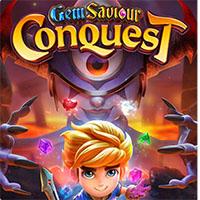

















Building upon the foundational insights from The Power of Patterns: From Mythology to Modern Strategies, this exploration delves into how recognizing and interpreting patterns in our daily lives can serve as a powerful catalyst for personal and collective creativity. Patterns are not merely abstract concepts but living frameworks that shape our perception, problem-solving, and innovative capacity.
- Connecting Mythological Patterns to Everyday Creativity
- The Evolution of Pattern Recognition: From Mythology to Personal Insight
- Cognitive Foundations: How Our Brain Detects and Uses Patterns for Creativity
- Everyday Patterns as Catalysts for Creative Innovation
- Hidden Patterns in Personal Experiences and Their Creative Potential
- Breaking and Reimagining Patterns: Pathways to Originality
- Cross-Disciplinary Pattern Recognition: Merging Ideas for Creative Synergy
- The Role of Intuition and Serendipity in Pattern-Based Creativity
- Tools and Techniques to Enhance Pattern Recognition for Creative Growth
- From Personal Creativity to Societal Innovation: Patterns as Collective Catalysts
- Bridging Back: From Personal Pattern Recognition to the Broader Power of Patterns
Connecting Mythological Patterns to Everyday Creativity
Patterns have long been woven into the fabric of human consciousness, originating from ancient myths, stories, and symbols that helped early societies interpret the world. These mythological patterns—such as the hero’s journey, the archetype of transformation, or recurring elemental motifs—served as cognitive templates that shaped collective understanding. According to Carl Jung’s theory of archetypes, these universal symbols are embedded in our subconscious, influencing not only stories and art but also individual perception and problem-solving approaches.
Today, these ancient patterns continue to underpin our mental models, often guiding our instincts and decisions subconsciously. Recognizing this connection allows us to see how the same underlying structures that once explained mythic narratives can be harnessed as tools for creative problem-solving in our daily lives. When we identify patterns in our routines, interactions, or environment, we tap into a deep well of collective human knowledge—making it accessible for innovative thinking and personal growth.
The Evolution of Pattern Recognition: From Mythology to Personal Insight
Mythological patterns provided shared mental frameworks that helped early humans navigate complex social and natural worlds. These templates—such as cycles of seasons, life-death-rebirth motifs, or hero’s quests—became foundational for storytelling, ritual, and cultural identity. As societies evolved, the collective recognition of these patterns influenced how individuals approached problem-solving, fostering a sense of continuity and meaning.
Transitioning from collective myth-based patterns to personal cognitive patterns, individuals began to internalize these motifs, applying them to personal challenges. For example, recognizing a recurring pattern of setbacks before breakthrough moments can mirror mythological cycles of trial and transformation. This internalization enables us to interpret our experiences through symbolic lenses, enhancing creative resilience and insight.
An illustrative case is the use of mythic motifs in modern storytelling and branding. Companies often adopt archetypal symbols—like the hero or mentor—to craft compelling narratives that resonate deeply with audiences, demonstrating how mythological patterns continue to influence personal and collective expression.
Cognitive Foundations: How Our Brain Detects and Uses Patterns for Creativity
Neuroscientific research shows that the human brain is wired for pattern recognition, with neural circuits in the temporal and prefrontal cortices playing key roles in decoding regularities. The brain’s ability to detect patterns rapidly allows for associative thinking—a cornerstone of creativity. When we encounter familiar patterns, our neural networks activate stored memories and schemas, enabling us to generate novel ideas by recombining existing concepts.
Subconscious pattern detection often sparks flashes of insight, as the brain unconsciously filters information for meaningful connections. This process aligns with the concept of divergent thinking, where multiple solutions are generated from a single pattern recognition event. Differentiating routine pattern recognition from creative synthesis involves engaging higher-order cognitive functions, such as abstraction and metaphorical thinking, which allow us to see beyond the obvious.
Everyday Patterns as Catalysts for Creative Innovation
Our environment is rich with patterns—social behaviors, environmental cues, habitual routines—that often go unnoticed. Recognizing these patterns consciously can serve as a springboard for innovative ideas. For instance, noticing recurring social interactions or environmental trends can inspire new products, services, or artistic projects.
Practical techniques include mindful observation, journaling, and environmental scanning. For example, a designer observing daily commuting patterns might identify unmet needs that lead to innovative transportation solutions. Similarly, entrepreneurs who recognize social behaviors—such as a growing interest in sustainable living—can develop impactful initiatives aligned with emerging trends.
Case Study: A community garden project emerged when participants observed common urban challenges—lack of green spaces and community engagement—recognizing these patterns as opportunities for creative urban renewal.
Hidden Patterns in Personal Experiences and Their Creative Potential
Personal stories, habits, and routines often contain recurring themes—such as feelings of stagnation or aspiration—that, once identified, reveal hidden avenues for growth. Recognizing these internal patterns allows individuals to understand underlying motivations and unlock creative solutions.
For example, someone noticing a pattern of procrastination before creative bursts can reframe this as a cyclical rhythm, leading to tailored productivity strategies. Exercises like reflective journaling or guided visualizations help uncover these internal motifs, deepening self-awareness and fostering innovative thinking.
“Understanding the recurring patterns in our personal narratives transforms routine routines into fertile ground for creative breakthroughs.”
Breaking and Reimagining Patterns: Pathways to Originality
While recognizing patterns is essential, it’s equally important to identify when they become limiting. Repetitive or unconscious patterns can hinder innovation. Deliberately disrupting these routines—through practices like brainstorming, role reversal, or lateral thinking—can open new creative pathways.
A famous example is the artistic breakthrough of Pablo Picasso, who intentionally broke traditional perspective rules, reconfiguring visual patterns to create Cubism. Such pattern reconfiguration encourages viewing problems from multiple angles, often leading to original solutions.
Cross-Disciplinary Pattern Recognition: Merging Ideas for Creative Synergy
Innovative ideas frequently emerge at the intersection of unrelated fields. Drawing connections between disparate patterns—such as biological systems and engineering design—fosters creative synergy. Examples include biomimicry, where nature’s patterns inspire technological innovations, like Velcro’s development from burrs’ hooks.
Cultivating cross-disciplinary awareness involves exposure to diverse domains, active pattern comparison, and synthesis. Attending interdisciplinary workshops or reading across fields can spark novel ideas, as seen in the merging of art and technology in digital design.
The Role of Intuition and Serendipity in Pattern-Based Creativity
While logical analysis is vital, intuition often guides us to recognize subtle patterns that escape conscious detection. Serendipitous encounters—such as chance meetings or accidental discoveries—can introduce new patterns that inspire innovation.
Developing openness and mindfulness enhances intuitive pattern recognition. Meditation, for example, quiets analytical mind chatter, allowing subconscious patterns to surface. This receptive state increases the likelihood of serendipity leading to creative insights.
Tools and Techniques to Enhance Pattern Recognition for Creative Growth
| Technique | Description |
|---|---|
| Mind-mapping | Visualizing connections between ideas and patterns to stimulate creative associations. |
| Journaling | Recording daily observations to identify recurring themes and motifs over time. |
| Data Analysis Tools | Using software like pattern detection algorithms and visualization tools to uncover hidden patterns in large datasets. |
Building habits such as regular reflection, cross-disciplinary learning, and embracing experimentation enhances ongoing pattern awareness, fostering a fertile environment for creative growth.
From Personal Creativity to Societal Innovation: Patterns as Collective Catalysts
Individual pattern recognition often seeds larger societal shifts. Movements like sustainability or social justice emerge from recognizing collective patterns—such as environmental degradation or social inequality—and reinterpreting them through innovative lenses.
Historical examples include the recognition of the cyclical nature of economic booms and busts leading to new financial regulations or the reimagining of urban spaces inspired by patterns of human movement and social interaction. Encouraging community-based pattern exploration—through participatory design or citizen science—can amplify these collective creative processes.
Bridging Back: From Personal Pattern Recognition to the Broader Power of Patterns
Reflecting on how personal insights into patterns echo and reinforce the overarching theme, we see that individual creativity feeds into societal innovation, creating a dynamic cycle of pattern recognition and reconfiguration. Recognizing internal patterns not only fosters personal growth but also enhances our capacity to understand and influence larger systems.
As we unlock personal creativity through conscious pattern awareness, we contribute to a collective understanding of how human history and strategy have been shaped by the universal language of patterns. This ongoing process underscores the importance of cultivating pattern recognition skills at every level—personal, social, and global—ultimately enriching our shared human experience.
